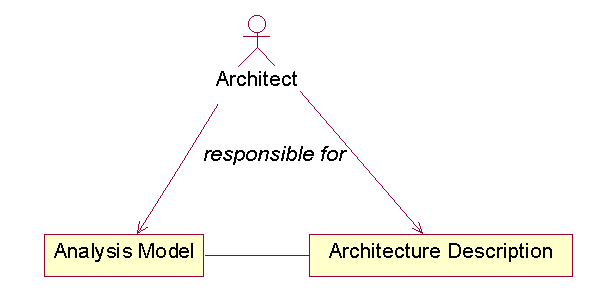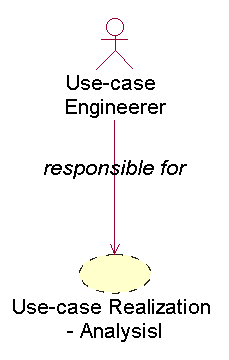
Analysis
|
|
Use-Case Model |
Analysis Model |
|
|
1 |
Described using the language of the customer |
Described using the language of the developer |
|
|
|
|
|
|
|
2 |
External view of the system |
Internal view of the system |
|
|
|
|
|
|
|
3 |
Structured by use cases; Gives structure to the external view |
Structured by stereotypical classes and packages; gives structure to the internal view |
|
|
|
|
|
|
|
4 |
Used primarily as a contract between the customer and the developer on what the system should and should not do |
Used primarily by developers to understand how the system should be shaped, i.e. designed and implemented |
|
|
|
|
|
|
|
5 |
May contain redundancies, inconsistencies, etc. among requirements |
Should not contain redundancies, inconsistencies, etc. among requirements |
|
|
|
|
|
|
|
6 |
Captures the functionality of the system, including architecturally significant functionality |
Outlines how to realize the functionality within the system, including architecturally significant functionality; works as a first cut at design |
|
|
|
|
|
|
|
7 |
Defines use cases that are further analyzed in the analysis model |
Defines use-case realizations, each one representing the analysis of a use case from the use-case model |
|
Most of analysis work is done in the elaboration phase.

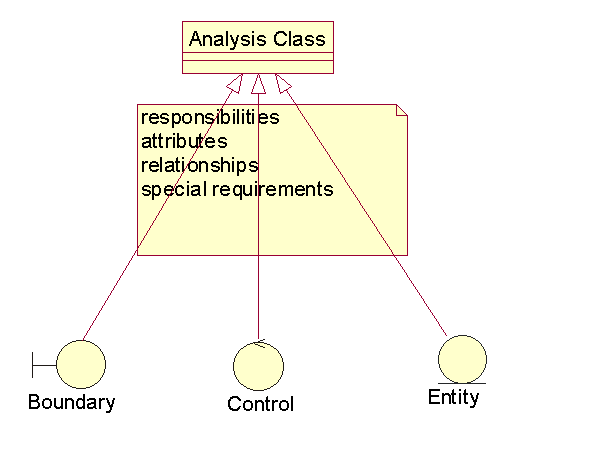
Example:


Example:


Example:


Example:
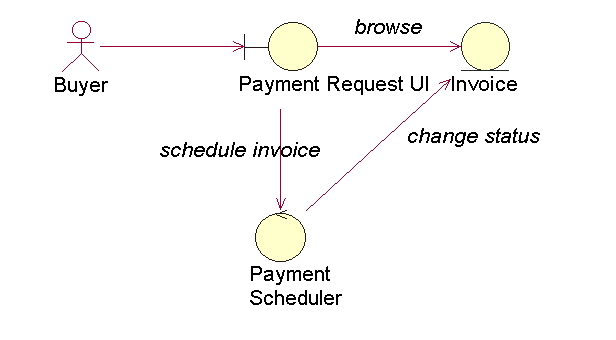


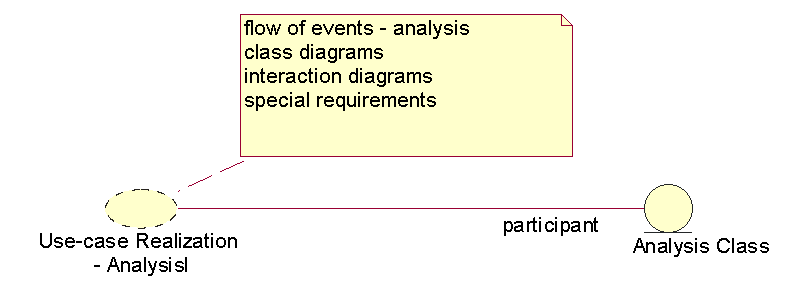
Example: Class diagram for Pay Invoice use-case realization

Example: Class diagram for register course use-case realization
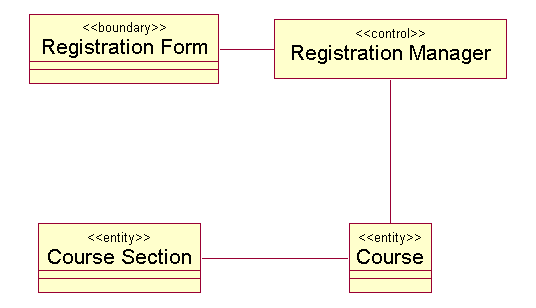
Created: beginning of use-case realization(s)
Terminate: end of use-case realization(s)
Example: Collaboration diagram for a realization of the Pay Invoice

Example: collaboration diagram for Register Course use case
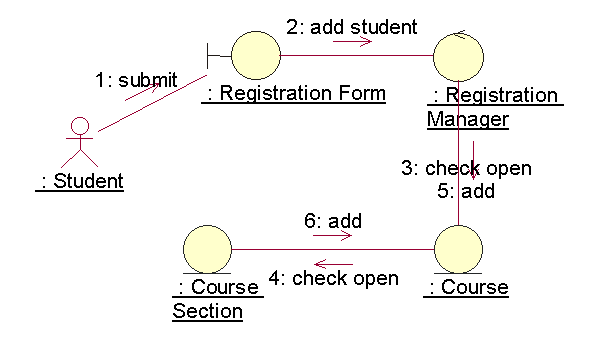
Its contents should be strongly related
Its dependencies on others should be minimized
|
Service |
Use Case |
|
System functionality |
Sequence of actions for an actor’s need and interaction |
|
For customers (buyers) of the system |
For users of the system |
